More in World

Bjorn Borg Reveals Battle with Aggressive Prostate Cancer
Swedish tennis legend Bjorn Borg has disclosed that he is fighting an aggressive form of prostate cancer. The 11-time Grand Slam champion revealed his diagnosis in his autobiography, "Heartbeats: A Memoir," co-authored with his wife Patricia. Borg underwent surgery in 2024 and is now in remission. Borg, who won five consecutive Wimbledon titles from 1976 to 1980 and claimed six French Open championships, shared the news with a determined outlook. "I spoke to the doctor, and he said this is really, really bad," Borg told the BBC. "He said you have these sleeping cancer cells, it’s going to be a fight in the future. Every six months I go and test myself. I did my last test two weeks ago. It’s a thing I have to live with." Despite routine health check-ups over the years, the cancer was only detected in 2023, surprising the tennis great. "The thing is that you don’t feel anything – you feel good, and then it’s just happened," Borg stated. "I hope that I’m going to be OK. I take it day by day, year by year, hopefully." Borg, who dominated men's tennis during his prime and held the world No. 1 ranking for 109 weeks, briefly attempted a comeback in 1991 but did not regain his former standing. His iconic rivalry with John McEnroe, particularly their 1980 Wimbledon final regarded as one of the greatest matches in tennis history, remains a defining part of his legacy. Reflecting on his new challenge, Borg wrote, "Now I have a new opponent in cancer – one I can’t control. But I’m going to beat it. I’m not giving up. I fight like every day is a Wimbledon final. And those usually go pretty well, don’t they?"
World
|2 min read
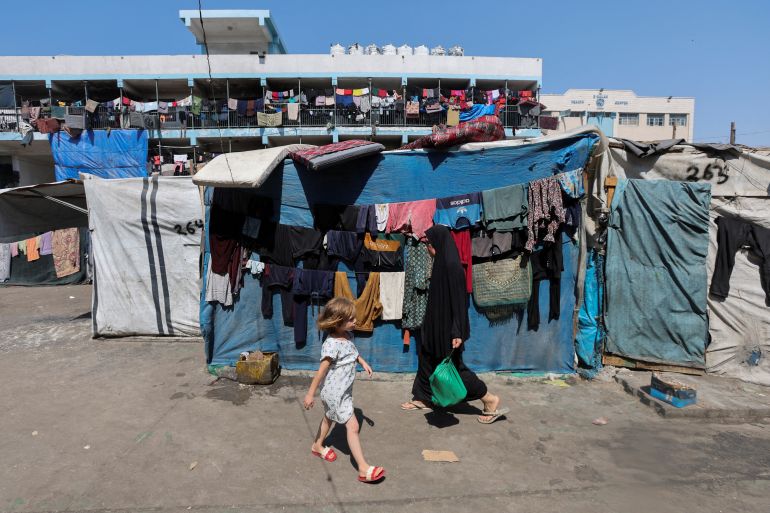
Humanitarian Crisis Deepens in Gaza as Aid Access Shrinks Amid Escalating Conflict
The humanitarian situation in Gaza is deteriorating rapidly as ongoing military operations have resulted in mounting casualties, massive displacement, widespread destruction, and increasing constraints on relief efforts, according to United Nations humanitarians. The UN Office for the Coordination of Humanitarian Affairs (OCHA) revealed that in just five days, 11 emergency shelters accommodating around 11,000 people have been hit directly or indirectly in Gaza City. These facilities were under the care of the UN Relief and Works Agency for Palestine Refugees in the Near East. OCHA's monitoring partners have documented a sharp rise in internal displacement within the Gaza Strip, now surpassing one million since the collapse of the ceasefire in mid-March. From northern to southern Gaza alone, approximately 200,000 people were displaced over the past month, including 56,000 since the previous Sunday. The agency expressed serious concern over displaced families forced to sleep in the open or makeshift tents, struggling to survive amid deteriorating conditions. Despite stringent restrictions, UN teams and their partners continue efforts to deliver critical aid across Gaza. However, relief operations face multiple challenges. The Zikim crossing—the sole gateway into northern Gaza, where famine conditions have been confirmed—has been closed since the weekend. Additionally, Israeli authorities have designated some food items, including peanut butter, as "luxuries," barring their entry and causing significant stockpiles of approved aid to be held up outside Gaza. Inconsistencies in inspection protocols across different entry points compound delays and unpredictability. Restrictions also hinder movements within Gaza itself. On Wednesday alone, three of 14 coordinated humanitarian missions were blocked, including two meant to deliver food to northern areas. Two additional attempts were partially completed or abandoned due to obstacles. Such impediments waste precious time and resources, limit assistance to vulnerable populations, and expose aid workers to heightened risks. "The aid reaching people falls far short of what they need, and the cost is measured in lives," OCHA warned, emphasizing that new restrictions appear weekly, systematically preventing life-saving support. Despite these roadblocks, humanitarian efforts have persisted. In early April, teams gathered over 12,500 tonnes of wheat flour, food parcels, and bulk supplies via Israeli-controlled crossings. Nearly 560,000 meals were served daily through 116 kitchens, alongside 10,000 loaves of bread distributed to displaced individuals relocating southward. To combat malnutrition, UN agencies continued screening children and enrolling them in treatment programs. The UN Children’s Fund (UNICEF) dispatched more than 200,000 nutritional packs for infants and young children—sufficient for over 63,000 children for two weeks—and 10,000 boxes of high-energy biscuits to support acutely malnourished pregnant and breastfeeding women for one month. Stephane Dujarric, spokesperson for UN Secretary-General Antonio Guterres, underscored the urgent need for a ceasefire and expanded humanitarian access at a briefing: "We need hundreds of trucks every day, safe and open routes, an end to bureaucratic delays, restoration of power and water, and more meaningful commercial imports." He also called for the immediate and unconditional release of all hostages held by Hamas and other groups in Gaza, as well as the freedom of Palestinians arbitrarily detained in Israeli custody. The situation remains fragile as humanitarian agencies continue to navigate complex access challenges amid the intensifying crisis in Gaza.
World
|3 min read
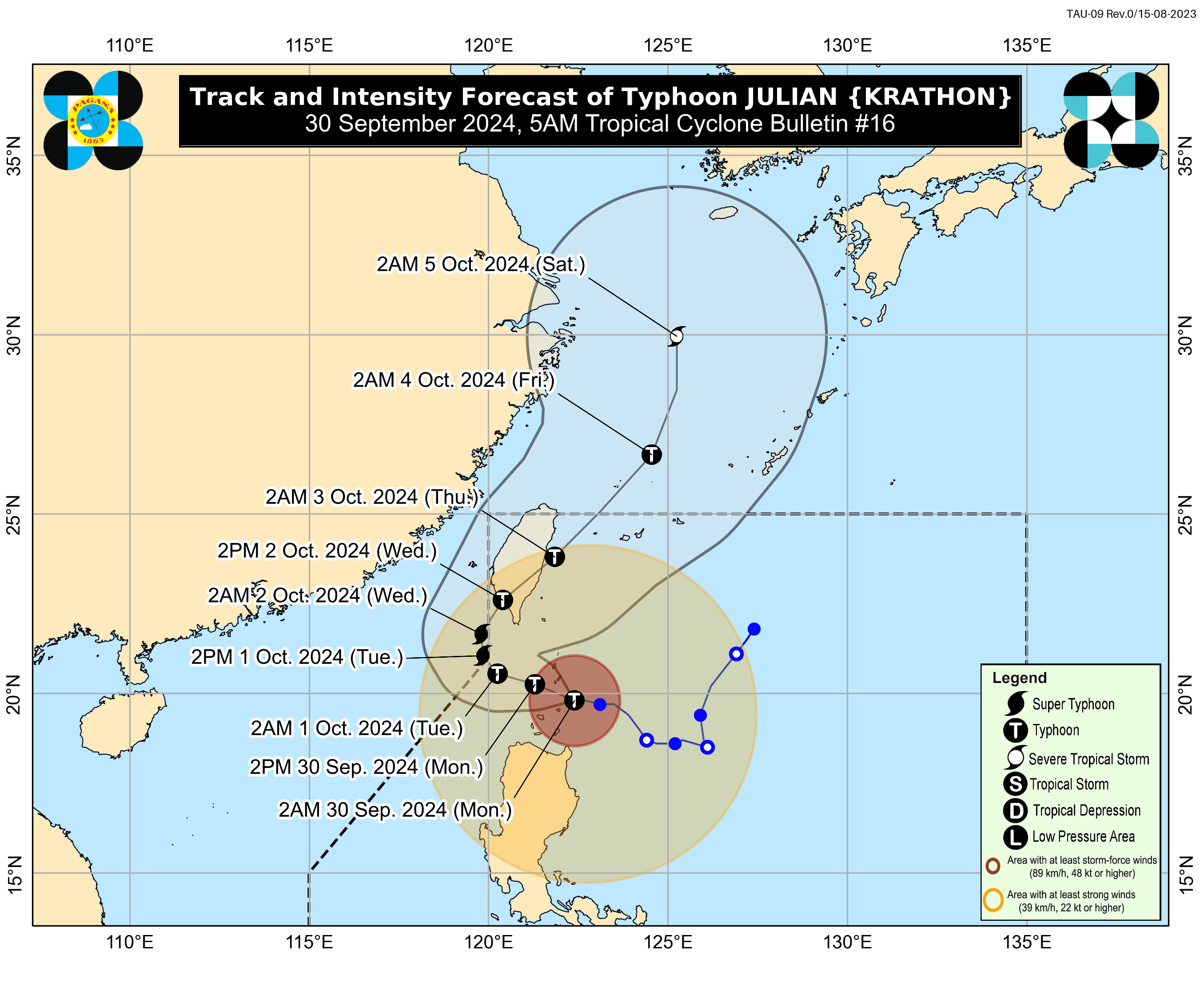
Severe Tropical Storm Nando Strengthens, Threatens Batanes and Northern Luzon
Severe Tropical Storm Nando (international name: Ragasa) is steadily gaining strength as it moves northwest across the Philippine Sea, according to the Philippine Atmospheric, Geophysical and Astronomical Services Administration (PAGASA) on September 20. PAGASA weather specialist Grace Castañeda reported in a briefing that Nando is forecasted to approach the Batanes–Babuyan Islands by the afternoon or evening of Monday, September 22, with the likelihood of intensifying into a super typhoon prior to landfall. "Nando continues to traverse the sea and gradually strengthens. Its trough, an extension of the storm system, will bring scattered rainfall over eastern Luzon and parts of the Visayas today," Castañeda stated. At 4 a.m. on Saturday, PAGASA located Nando's center approximately 780 kilometers east of Casiguran, Aurora, moving northwest at 10 kilometers per hour. The storm currently has maximum sustained winds near the center of 100 km/h, with gusts up to 125 km/h, and a central pressure of 994 hPa. Wind speeds between strong breeze and storm-force extend up to 440 kilometers from the center. Forecasts indicate that Nando will continue to strengthen over the Philippine Sea, potentially reaching typhoon intensity within 12 hours and possibly escalating to a super typhoon as it nears the Batanes–Babuyan Islands on Monday. "Starting tomorrow, the cyclone will get closer to the country and is expected to approach or make landfall in the Batanes–Babuyan Islands area by Monday afternoon or evening," Castañeda explained. She added, "As it moves over open waters, it may strengthen into a typhoon and possibly intensify further into a super typhoon before landfall." PAGASA anticipates Nando will exit the Philippine Area of Responsibility (PAR) by Tuesday, September 23. In addition to Nando's direct effects, PAGASA cautions that the southwest monsoon, enhanced by the storm, will bring heavy rainfall to several regions. "The southwest monsoon remains active over the western sections of Northern and Central Luzon, as well as parts of Southern Luzon and the Visayas," Castañeda noted. The trough associated with Nando is expected to produce scattered showers in eastern Luzon and the Visayas starting September 20. Heavy rains due to the southwest monsoon are forecasted for early next week in western Central Luzon, much of Southern Luzon, as well as parts of the Visayas and Mindanao. "Given the expansive coverage of Nando, the entire Northern Luzon region and portions of Central Luzon will experience strong winds and heavy rainfall," Castañeda said, emphasizing the importance of vigilance. While no wind signals have been raised yet, Nando's influence is already causing heavy rain and gusty winds across Northern and Central Luzon, parts of the Visayas, and Mindanao. Detailed rainfall and wind forecasts include: - September 20: Bicol Region, Eastern Visayas, Caraga – heavy rainfall and gusty winds - September 21: Central Luzon, Metro Manila, CALABARZON, MIMAROPA, Visayas, Northern Mindanao – heavy rainfall - September 22: Central Luzon, Metro Manila, CALABARZON, Bicol Region, MIMAROPA, Visayas, Northern Mindanao, Zamboanga Peninsula, BARMM, SOCCSKSARGEN, parts of Davao – gale-force gusts Mariners have been advised to exercise caution due to moderate to rough seas, with wave heights reaching up to 3.0 meters along the eastern coasts of Cagayan, Isabela, and Catanduanes, and waves up to 2.5 meters in other exposed areas. A storm surge warning may also be issued for coastal waters in Northern Luzon. Castañeda concluded by urging the public to exercise heightened vigilance and preparedness ahead of the storm’s impact. "Extra caution and readiness are essential for our fellow citizens," she said.
World
|3 min read
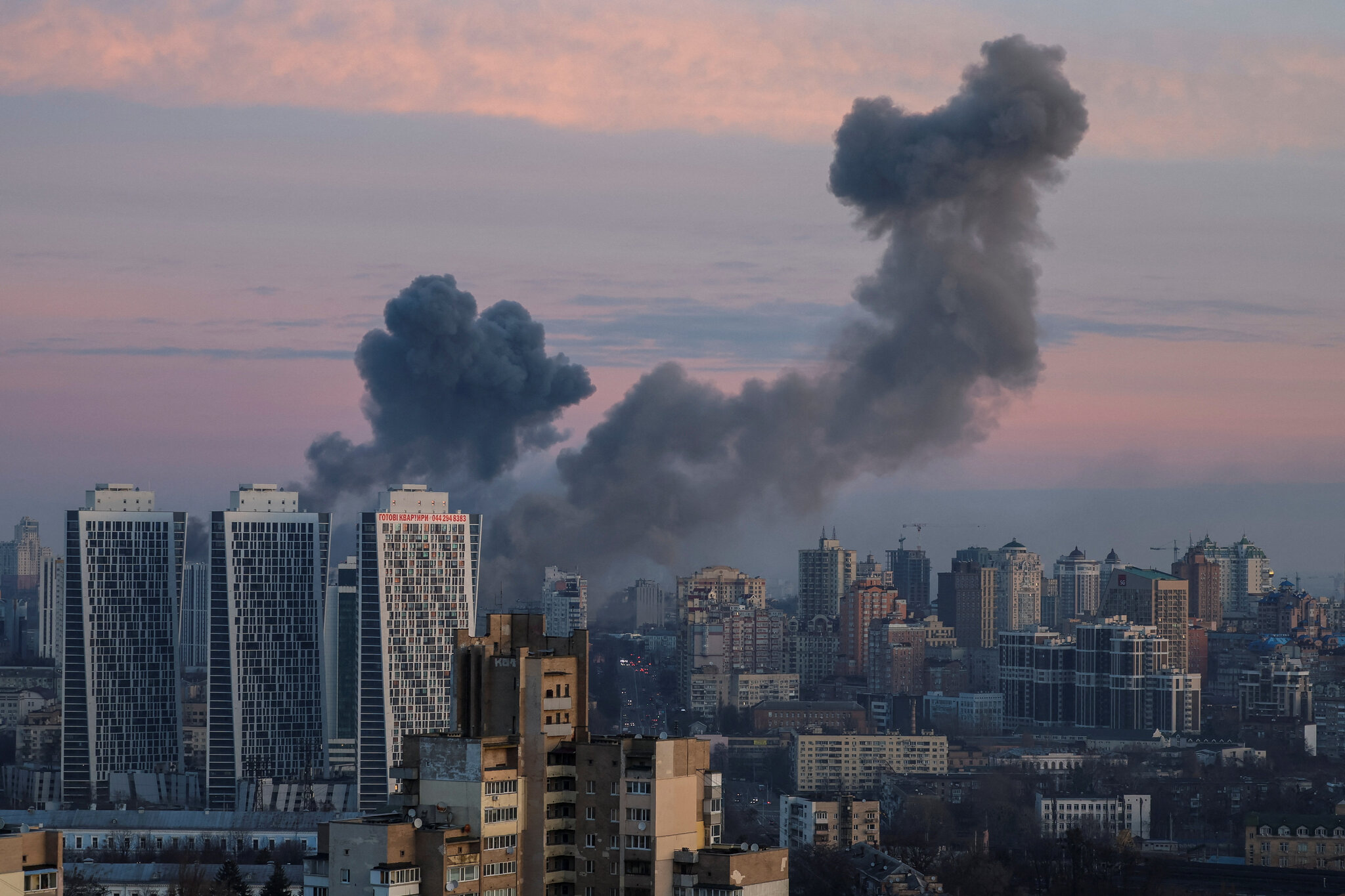
Russia Launches Extensive Drone and Missile Assault on Ukraine, Resulting in Civilian Casualties and Infrastructure Damage
KYIV — Russia conducted a significant drone and missile offensive across Ukraine overnight, leading to three civilian deaths, numerous injuries, and widespread damage to infrastructure and residential buildings, President Volodymyr Zelenskyy reported on Saturday. Despite ongoing diplomatic initiatives aimed at resolving the conflict ignited by Russia’s invasion in February 2022, hostilities have escalated in recent months. In a Telegram statement, Zelenskyy detailed that approximately 580 drones and 40 missiles targeted various infrastructure sites, civilian manufacturing centers, and residential zones across the country. Ukrainian air defense systems intercepted 552 drones and 31 missiles, according to Ukraine’s air force. Zelenskyy condemned the attacks, describing them as part of a deliberate campaign to terrorize civilians rather than military necessity. He stated, \"All night, Ukraine was under a massive attack by Russia. Every such strike is not a military necessity but a deliberate strategy by Russia to terrorize civilians and destroy our infrastructure.\" Russia has denied targeting civilian areas. In the central city of Dnipro, a missile armed with cluster munitions struck a residential apartment building, causing one death and injuring at least 26 individuals, regional authorities reported. Two additional fatalities occurred in the Chernihiv and Khmelnytskyi regions, according to local officials. Residents described the harrowing experience, with Yulia Chystokletova from Kyiv recounting, \"I could hear the \"Shahed\" drone getting closer and closer. I understood it was flying towards us. My child and I were very frightened. It should not be happening in the 21st century. We are all people. Agree... sit down at the negotiating table.\" Military pressure continues to mount, particularly in eastern Ukraine, where Russian forces persist in a slow advance, destroying villages and acquiring new territory. Both Ukraine and Russia have intensified drone warfare, with Russia deploying large swarms of hundreds of drones per attack, a shift from earlier strikes involving only dozens. Ukraine has responded with drone offensives targeting refineries, fuel depots, and logistical hubs within Russia. Ukraine’s General Staff reported successful drone attacks on two Russian oil refineries located in the Saratov and Samara regions, resulting in explosions and fires overnight. Zelenskyy emphasized Ukraine’s growing drone capabilities, noting, \"We have drones, we know how to produce them. It all depends on the number of drones we use per day. As soon as the number of drones is comparable to that of the Russians, they will feel it in terms of fuel shortages and the number of queues at petrol stations.\" Meanwhile, Russia’s Defense Ministry confirmed its forces conducted precise strikes against Ukrainian military-industrial targets during the night. In response to airstrikes near the western border with NATO member Poland, Polish and allied aircraft were deployed early Saturday to safeguard Polish airspace, according to the Polish military command.
World
|3 min read
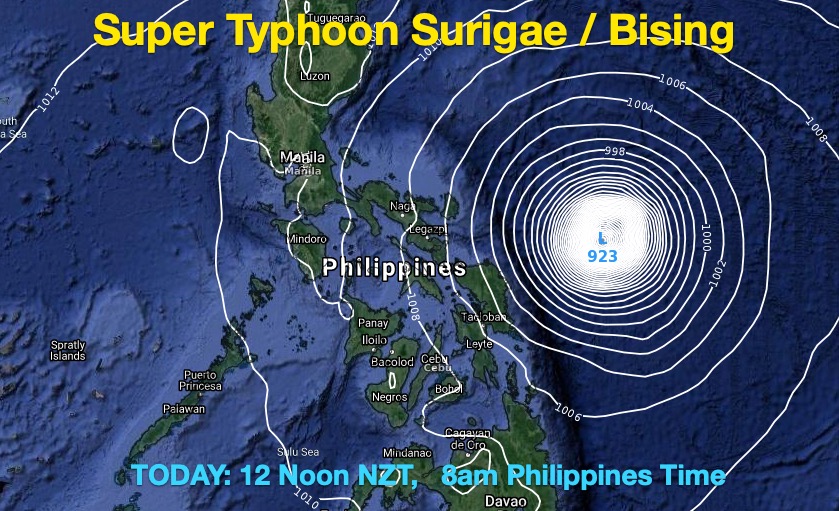
PAGASA Monitors New Low-Pressure Area Near Mindanao Amid Super Typhoon Nando's Impact
The Philippine Atmospheric, Geophysical and Astronomical Services Administration (PAGASA) reported the presence of a low-pressure area (LPA) located approximately 1,475 kilometers east of northeastern Mindanao at 4 a.m. on Monday, September 22. Currently situated outside the Philippine Area of Responsibility (PAR), this weather disturbance carries a medium probability of developing into a tropical depression within the next 24 hours. Should the LPA move into PAR and intensify into a tropical cyclone, it will be locally named "Opong." Meanwhile, PAGASA continues to track Super Typhoon Nando (internationally known as Ragasa), which remains within PAR and is impacting parts of Northern Luzon. According to forecasts, Typhoon Nando may pass near or make landfall over the Babuyan Islands between noon and early afternoon today. The typhoon is expected to exit the Philippine Area of Responsibility by Tuesday morning, September 23. Authorities remain vigilant as weather conditions evolve, urging the public to stay informed of the latest updates and advisories.
World
|1 min read
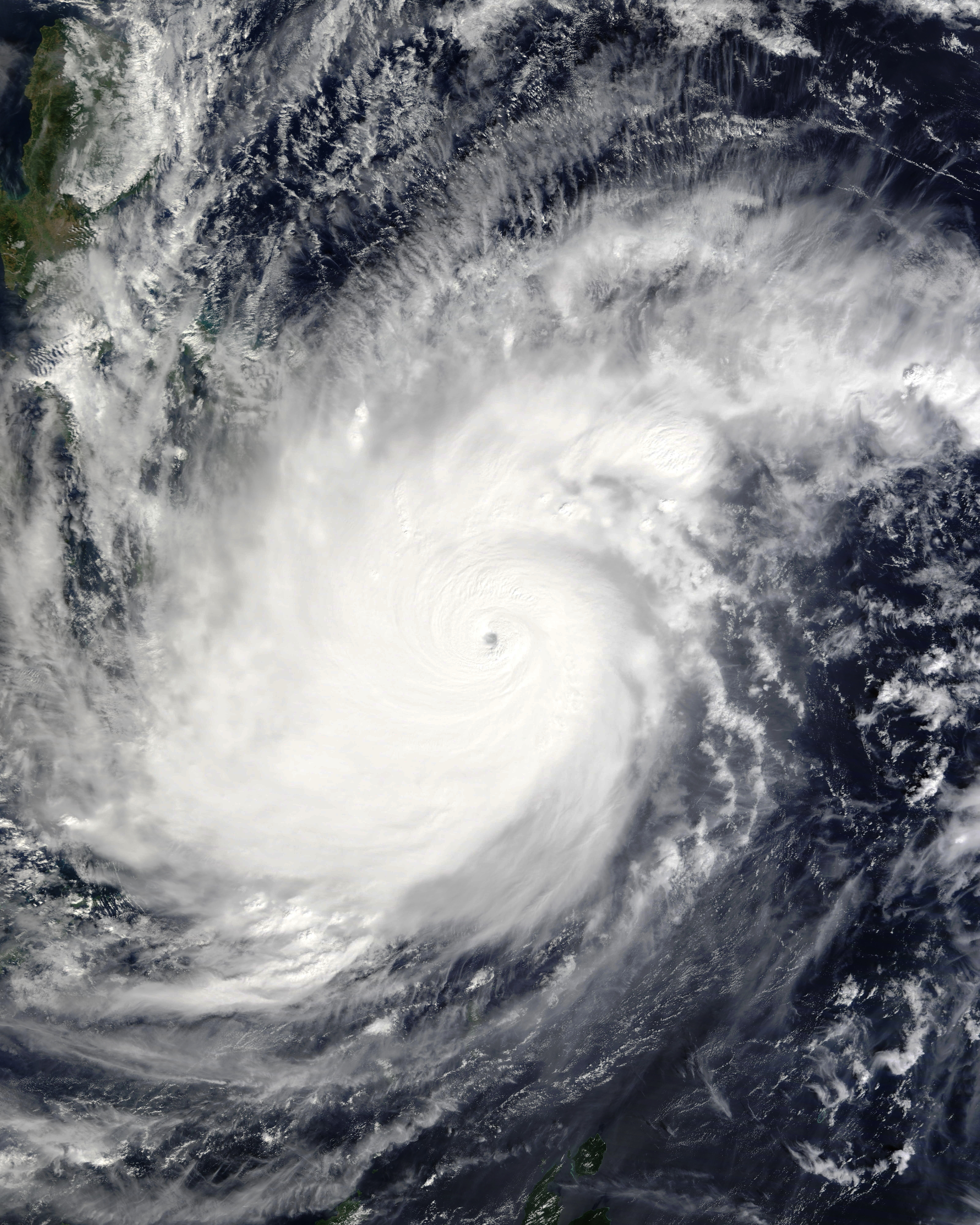
Super Typhoon Ragasa Prompts Mass Evacuations in China and the Philippines
Super Typhoon Ragasa has triggered large-scale evacuation efforts in southern China and northern Philippines as it advances with destructive force across the region. In Shenzhen, Chinese authorities are preparing to evacuate approximately 400,000 residents from vulnerable coastal and low-lying zones. Several cities in Guangdong province have cancelled classes, suspended work, and halted public transportation to mitigate risks posed by the approaching storm. Meanwhile, the typhoon made landfall on Calayan Island, part of the Babuyan Islands in the northern Philippines, at 3:00 pm local time. The Philippine weather agency reported sustained winds of 215 kilometers per hour (134 mph) and gusts reaching 295 km/h near the storm’s eye. Locals described the fierce conditions firsthand. "I woke up because of the strong wind. It was hitting the windows, and it sounded like a machine that was switched on," said Tirso Tugagao from the coastal town of Aparri in Cagayan province. On Calayan Island, Herbert Singun, a local information officer, reported that parts of a school roof were torn off and propelled onto a nearby evacuation center, injuring one person lightly. He also noted the catastrophic damage to local vegetation: "There were eight coconut trees swaying before. Now only four are still standing. That shows how strong this typhoon is." Over 10,000 residents have been evacuated across the Philippines, with widespread closures of schools and government offices in Manila and 29 provinces. The approaching typhoon has disrupted air travel as well; Cathay Pacific announced plans to cancel more than 500 flights at Hong Kong International Airport, suspending passenger operations from 6:00 pm Tuesday, with services expected to resume by Thursday daytime. Taiwan is also bracing for impact. The national weather service forecasts "extremely torrential rain" in eastern regions due to the storm’s expansive 320-kilometer radius, whose strong winds and outer bands are already affecting the island. James Wu, a fire department official in mountainous Pingtung, shared concerns about potential damage similar to that inflicted by Typhoon Koinu two years ago, which caused widespread power outages and structural destruction. Philippine weather expert John Grender Almario warned of "severe flooding and landslides" in northern Luzon. This warning comes amidst recent public protests over corruption scandals linked to failed or incomplete flood control infrastructure projects. As the first significant landmass in the Pacific cyclone belt, the Philippines confronts an average of 20 storms annually, leaving many communities perpetually vulnerable. Climate scientists caution that global warming driven by human activities is intensifying these storms, heightening their destructive potential. Authorities continue to monitor the storm closely and urge residents in affected areas to remain vigilant and adhere to safety directives.
World
|3 min read
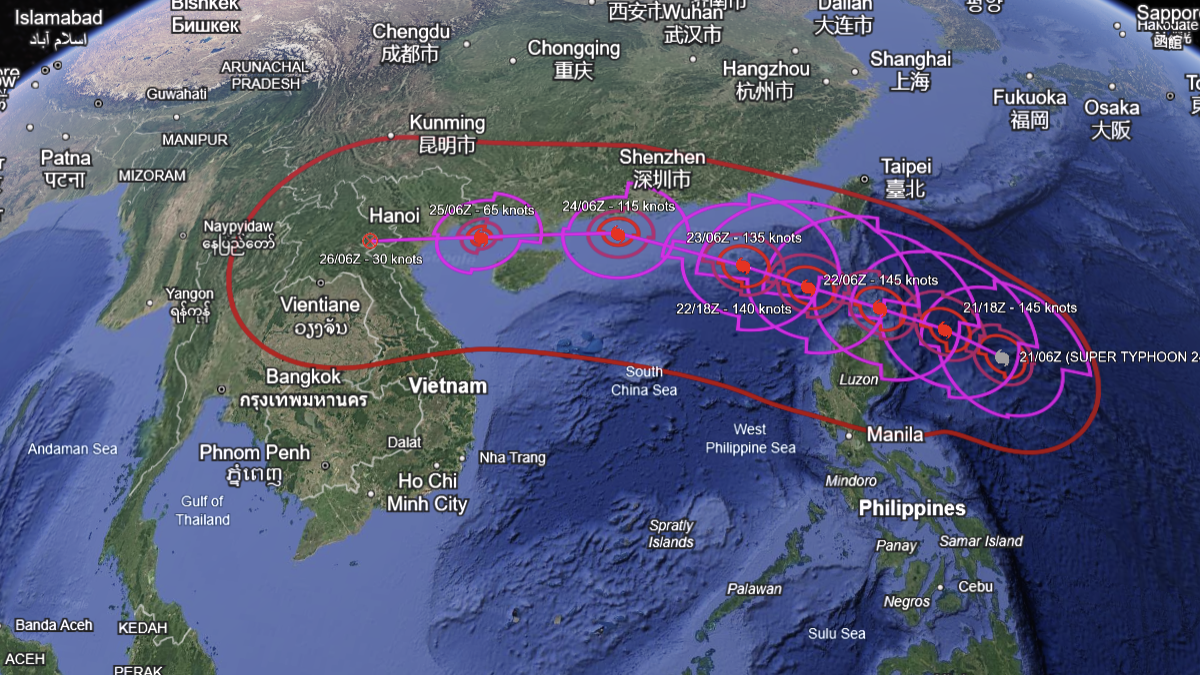
Super Typhoon Ragasa Triggers Massive Evacuations in China and the Philippines
The Chinese city of Shenzhen is undertaking large-scale evacuation efforts, preparing to relocate approximately 400,000 residents from coastal and low-lying areas as Super Typhoon Ragasa approaches southern China. Meanwhile, in the northern Philippines, thousands have sought refuge from intense gale-force winds associated with the storm. Ragasa made landfall on Calayan Island, part of the sparsely inhabited Babuyan Islands, at 3:00 pm local time (0700 GMT), according to the Philippine weather agency. By 5:00 pm (0900 GMT), the typhoon's center sustained winds reached 215 kilometers per hour (134 mph), with gusts peaking at 295 kph. Residents described the severity of the storm’s impact. Tirso Tugagao, living in Aparri, a town in northern Cagayan province, stated, \"I woke up because of the strong wind. It was hitting the windows, and it sounded like a machine that was switched on.\" On Calayan Island, Herbert Singun, an information officer at the storm's center, reported that part of a school roof was torn away and struck a nearby evacuation center, causing one minor injury. Over a video call, he noted the destruction of local coconut trees, explaining, \"There were eight of them before. Now only four are still standing. That goes to show how strong this typhoon is.\" Over 10,000 individuals across the Philippines have been evacuated as a precaution. Schools and government offices remain closed in Manila and 29 other provinces to ensure public safety. In Guangdong province, authorities in multiple cities, including Shenzhen, have canceled classes, halted work, and suspended public transportation. Cathay Pacific, headquartered in Hong Kong, announced plans to cancel over 500 flights, with all passenger flights at Hong Kong International Airport suspended from 6:00 pm Tuesday until daytime Thursday. Taiwan’s meteorological department has issued forecasts warning of \"extremely torrential rain\" particularly in eastern regions. The typhoon's broad storm radius of approximately 320 kilometers means the outer winds and circulation are already affecting parts of Taiwan. James Wu, a fire department officer, shared concerns over possible damage mirroring Typhoon Koinu from two years ago, pointing to risks such as collapsed utility poles and flying debris from roofs. Philippine weather specialist John Grender Almario warned that northern Luzon could face severe flooding and landslides as Ragasa moves inland. The typhoon’s threat comes amid social unrest over corruption scandals related to flood control infrastructure, raising concerns about the effectiveness of disaster mitigation efforts. The Philippines typically endures around 20 typhoons annually, a pattern that continually exposes millions to poverty and calamity. Scientists emphasize that climate change driven by human activity is intensifying storm strength, making events like Ragasa increasingly destructive.
World
|3 min read
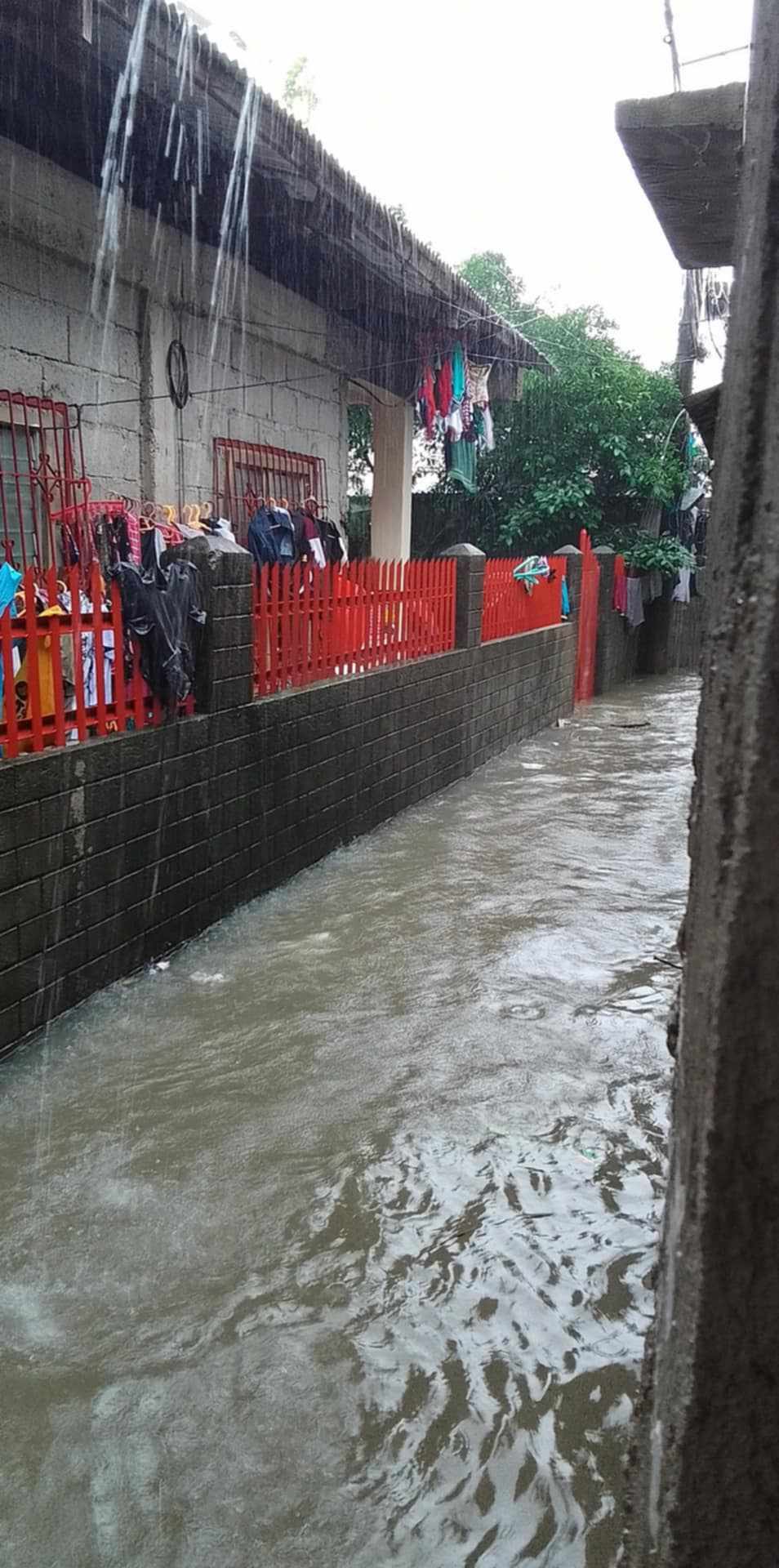
Severe Tropical Storm Opong Halts Sea Travel, Stranding Over 1,000 Passengers in Bicol Region Ports
Severe Tropical Storm Opong, locally known as Bualoi, has caused significant disruptions to sea travel in the Bicol Region, resulting in more than 1,000 passengers stranded across six ports, according to the Philippine Coast Guard (PCG-5). PCG-5 Commander Commodore Ivan Roldan reported that as of Thursday, a total of 1,120 passengers, 426 rolling cargo units, and 12 roll-on/roll-off (RoRo) vessels remain immobilized at key ports including Pio Duran in Albay; Masbate City, Mintac, and Cawayan in Masbate; and Matnog and Castilla in Sorsogon. In addition, 34 other RoRo vessels are currently taking shelter as the PCG command center continues to monitor maritime traffic around the clock. "PCG personnel stationed at all ports in the region are on heightened alert to swiftly address any emergencies brought about by Opong," Roldan stated. Over 400 personnel, comprising disaster response groups (DRG) from Catanduanes, Masbate, Sorsogon, Camarines Norte, and Camarines Sur, have been deployed. These teams are equipped with life vests, ropes, and communication devices essential for search and rescue operations. Roldan reassured the public that first aid, rescue, and communication facilities remain fully functional and prepared for potential incidents. For emergencies or inquiries, the public is encouraged to contact PCG Bicol and its stations via the following hotlines: - Coast Guard District Bicol: 09776121237 - Coast Guard Station Sorsogon: 09091141877 - Coast Guard Station Camarines Sur: 09463539906 - Coast Guard Station Albay: 09275640600 - Coast Guard Station Masbate: 09637777190 - Coast Guard Station Camarines Norte: 09682805965 - Coast Guard Station Catanduanes: 09478310880 Meanwhile, the Philippine Atmospheric, Geophysical and Astronomical Services Administration (PAGASA) reported that Opong has intensified, with maximum sustained winds reaching 110 kilometers per hour and gusts up to 135 kilometers per hour, further complicating maritime conditions in the affected areas.
World
|2 min read

Russia Launches Massive Drone and Missile Assault on Kyiv, Causing Significant Casualties and Damage
In the early hours of Sunday, September 28, Kyiv and other parts of Ukraine faced a large-scale assault comprised of hundreds of drones and missiles launched by Russian forces. This attack marked one of the most intense strikes on the Ukrainian capital since the full-scale conflict began, resulting in at least four fatalities and dozens of injuries. In response to the threat, Poland closed its airspace near two southeastern cities, with its air force deploying jets until the danger subsided. Ukraine’s military reported that during the overnight barrage, Russia launched 595 drones and 48 missiles. Ukrainian air defenses successfully intercepted 568 drones and 43 missiles, with Kyiv identified as the primary target of the offensive. President Volodymyr Zelenskyy described the attack as lasting more than 12 hours, inflicting significant damage on critical infrastructure, including a cardiology clinic, manufacturing facilities, and residential buildings. He reiterated a call for the international community to take urgent and decisive action to sever Russia’s energy revenues, which fund its military operations. \"The time for decisive action is long overdue, and we count on a strong response from the United States, Europe, the G7, and the G20,\" Zelenskyy stated via the Telegram messaging platform. Residents of Kyiv awoke to a barrage of explosions and the sound of air defenses engaging the invading drones and missiles. A localized air raid alert lasted nearly seven hours, ending at 09:13 a.m. local time. Journalists visiting Kyiv suburbs documented the devastation, noting rows of recently constructed houses nearly leveled and vehicles destroyed by falling debris. Many residents sought safety in underground metro stations, monitoring the situation through mobile devices. The assault also targeted regions across northern, central, and southern Ukraine, including the southern city of Zaporizhzhia, where authorities reported at least 16 injuries. Social media footage revealed several buildings in flames and extensively damaged. Local emergency services confirmed a minimum of four deaths nationwide and 67 injuries. Among the deceased was reportedly a 12-year-old girl, although this detail has not been officially verified, according to Tymur Tkachenko, head of Kyiv’s military administration. This latest offensive underscores the ongoing severity of the conflict and highlights the urgent need for an international response to curb further aggression.
World
|2 min read

Phivolcs Reports Nearly 100 Aftershocks Following 6.9-Magnitude Cebu Earthquake
The Philippine Institute of Volcanology and Seismology (Phivolcs) has documented close to 100 aftershocks after a powerful 6.9-magnitude earthquake hit Cebu on the night of Tuesday, September 30, 2025. The earthquake occurred at 9:59 p.m., and monitoring continued through the early hours of the following day. According to updates released by Phivolcs via its official social media platform, the first notable aftershocks struck shortly after the initial quake, with magnitudes of 5.0 and 5.1 recorded near Bogo City at 10:24 p.m. and 10:33 p.m., respectively. A magnitude 3.8 tremor was also detected near Tabogon at 10:39 p.m. The seismic activity persisted throughout the evening and night. By midnight, a 4.4-magnitude aftershock was registered at 11:59 p.m., followed by a stronger 4.9-magnitude tremor at 12:34 a.m. on October 1. In addition to these larger events, numerous smaller aftershocks, ranging from magnitude 1.5 up to 3.8, occurred in quick succession. The depths of these tremors varied significantly, from as shallow as two kilometers to depths reaching 80 kilometers. Phivolcs continues to closely monitor the situation and urges the public to stay alert and follow safety protocols. "Residents are advised to remain vigilant and prepared for possible aftershocks," Phivolcs emphasized in their statement.
World
|1 min read
